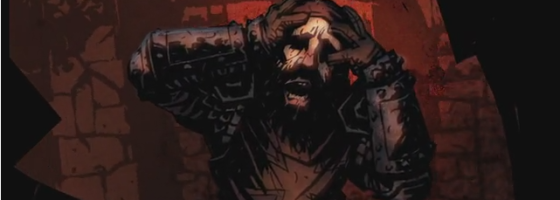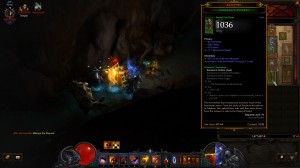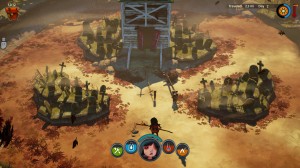Difficulty design in video games can be hard to get right. Getting the difficulty to be right for newcomers and expert players can be a never-ending job. For today’s post, I want to focus on when the progression models of a game don’t work to keep the player engaged.
I’m going to be recapping some topics I talked about on Game-Wisdom regarding difficulty. We won’t be discussing alternative difficulty designs in this post, simply because there’s enough for another post. A sure-fire way to make someone quit playing your game is to create the feeling of wasting time.
Poor difficulty design is like a brick wall stopping the player, and as we’re going to talk about, there are two big ones standing in the player’s way.
1: Grinding
Games built around abstracted mechanics always challenge the player to fight against stats. Depending on the RPG rules in effect, the player may not have a way of dealing with a challenge. When that happens, there’s only one recourse — To grind.
Grinding can mean several things: Making enough money to buy better gear, get enough experience to level up or stock up enough items to use against the boss. Sometimes, a feedback loop becomes a grind when the number of options diminishes.
In Diablo 3, the end game is all about set items to boost your stats and skills. What happens is that all the ways to upgrade your character disappear except for a select few.
In the Darkest Dungeon, the final dungeon requires suitable preparation each time you attempt it. Winning or losing doesn’t matter, as the player must repeat the preparation for each run. Situations that must be repeated the same way constantly will wear the player down.
Grinding is when there are no other means of progressing through the game. We’ve seen this time and time again in RPGs and getting stuck at a boss section. There are many RPGs out there that the difference between success and failure comes down to stats, and not the player’s ability.
Going through Persona 5, there were several bosses that were able to destroy me no matter what I did due to their attacks. The only solution was to grind levels to have enough HP to effectively “tank” the shots.
It’s important to point out that there will be players who will rush through your game and not be prepared. While you can’t stop them, you need to balance your challenges around a baseline experience. If a boss requires a party to be at level 50 to survive it, the highest enemies in the area shouldn’t stop at level 45, because that will increase the grinding for those remaining levels dramatically.
There are several ways to reduce grinding in your game. Actions that are repeated should be downplayed or streamlined the further the player gets. The more important an item is, the easier it should be to acquire them.
And the best and hardest way to reduce grind is to always provide multiple ways of progressing. Instead of just farming enemies, have daily or procedurally-generated quests for bonus experience. Besides buying gear, you could craft high quality gear if you don’t have the money for the shops. Depending on the game and the genre, there are different creative ways to get around grinding.
The key takeaway for this part is that as long as the player is making some kind of forward momentum with your game, then it won’t feel like grinding. With that said, the next point is when a brick wall becomes a black hole of despair.
2: Negative Feedback Loop
The biggest killer of a player’s will to keep going and an example of a problematic progression model is a negative feedback loop. A negative feedback loop is when the player loses progress; making the game harder and requiring them to work to get back to where they were. At its worst, the player can keep losing progress and won’t be able to comeback once they start losing.
Some examples would be games that feature stat decay, or requiring repeated runs in order to make one serious attempt at a play. In the last section, I talked about how progress must always move the player forward; negative feedback loops are the antithesis of that philosophy.
If the player is going to lose something upon failing, make it something that can be easily replaceable or mitigated. In X-Com, while squaddies can die, research options and upgraded gear can help to compensate for new members. In the Souls series, losing your souls is rough, but it’s something that can be replaced over time.
When the player feels like they are going backwards when playing your game, you know there is a problem. Balance is vital to avoid the player falling into a negative feedback loop. You never want the player to have to literally repeat everything they did in order to have a chance at making some progress.
If you’re trying to design a game around having both a strong positive and negative feedback loop, balance is going to be very important to keep someone playing a game where success and failure are on a knife’s edge.
Making Progress:
A well-designed progression model can keep people coming back to playing your game for hours on end, but keeping that balance throughout the entire game can be tough. Once progression slows down, it becomes harder to keep playing. When it stops, that usually spells trouble for someone wanting to finish a game.
As a designer, it’s important to examine your game and see if you can spot any trouble areas in your gameplay. Is there one area in particular that players are stopping at? While it’s impossible to make a game that everyone is going to see through to the end, the fewer hurdles you have will ultimately make for a better experience.





